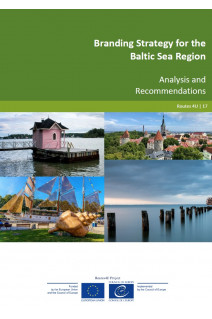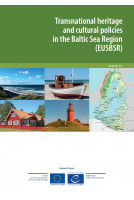This branding study will assist development strategies to build on the region’s natural, rich history and contribute not only to the economic, but also social well-being of communities. The Baltic Sea area was the first geographic area for which a EU macro-regional strategy was developed, in 2009. The Baltic Sea Region has competitive advantages that can be utilised. Promotion of its highly innovative digital space; the practicality of its citizens, who live and work in famously harsh climate; its Viking and Hanseatic heritage, now “Cultural Routes of the Council of Europe”, are but a few aspects that can highlight unique themes to attract tourism as well as business. Anyone interested in the process of branding in the Baltic Sea Region and how the Cultural Routes of the Council of Europe can play a crucial role is sure to find this study useful. The recommendations of this study are published in the Tourism Catalogue of the Cultural Routes of the Council of Europe in the EU macro-regions.
PREFACE INTRODUCTIONPART I – BRAND STRATEGY ANALYSIS
Executive summary
PART 2 - BRANDING STRATEGY FOR THE BALTIC SEA REGION 1. PLACE BRANDING
1.1 What is place branding?
1.2 Identity – positioning – image 18 1.3 Place leadership, innovation and marketing
1.4. What makes a good place brand?
2.WHY CREATE A BRAND FOR THE BSR?
2.1. Fostering sustainable tourism
2.2. Diversifying the visitor experience and the tourism industry
2.3. Strengthening unity and identity in the Baltic Sea Region
3.THE CULTURAL ROUTES IN THE BALTIC SEA REGION
3.1.A heterogeneous geographical dispersion
3.2. Themes of the Cultural Routes
3.3. Implications for branding
4. GOOD PRACTICES: EXISTING BRANDING INITIATIVES
4.1. Heritage branding initiatives
5. BRANDING THE BSR: IDENTITY AND BRANDING ELEMENTS
5.1. Inventory of elements of BSR identity
5.2. Narratives that help to construct the BSR brand
5.3. Two BSR-established Cultural Route brands
5.4. Flagship brands and services
5.5. Narratives that help to construct the BSR
6. CHALLENGES
6.1. Representativeness and structure of the brand
6.2. Competition
6.3. Lack of Resources
7.CONCLUSIONSPART 3 - IMPLEMENTATION GUIDELINES 1. CASE STUDIES
PLACE BRANDING LUXEMBOURG
PLACE BRANDING THE NORDIC COUNTRIES
2. RECOMMENDATIONS
2.1. Stakeholder engagement in brand strategy
2.2. Management of the brand
AUTHOR BIBLIOGRAPHY LIST OF ABBREVIATIONS






